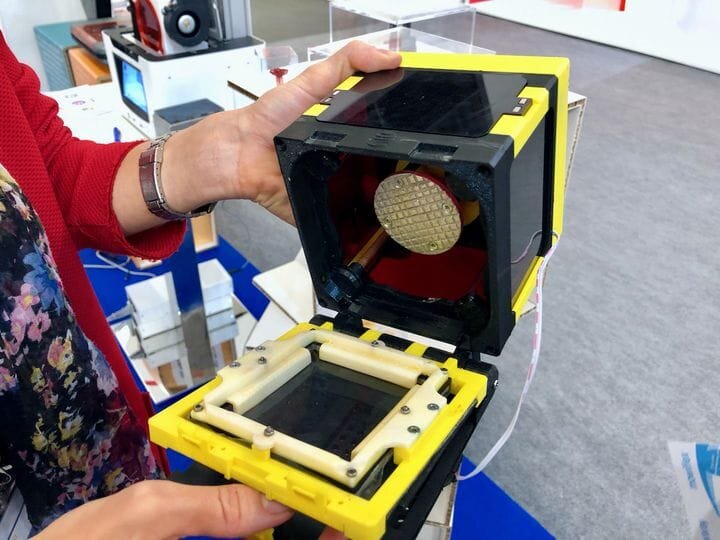![The LumiBEE open source DIY 3D printer [Source; Fabbaloo]](https://fabbaloo.com/wp-content/uploads/2020/05/image-asset_img_5eb08c5caba87.jpg)
Lumi Industries released plans for a free, open source DIY 3D printer kit, the LumiBEE.
There are plenty of open source 3D printer plans available, the most notable being from the RepRap project that got the ball rolling on desktop 3D printing many years ago. Most of them, however, use the FFF process, pushing thermoplastic filament through a hot nozzle. The LumiBEE is different; it uses the DLP / Resin photo-polymerization process.
The plans are indeed fully open sourced; this means you are free to download them and build your own LumiBEE. The files, apparently published on GitHub, include all you need to build the LumiBEE except for the physical materials, since GitHub cannot (yet) store non-digital objects.
LumiBEE Files
There’s quite a variety of items in the project:
-
A bill of materials
-
STL files of the several required 3D printable components (some intended to be printed in yellow, others black)
-
DXF files for non-3D printable components made from aluminum, neoprene, and PVC
-
An Arduino board to control the LumiBEE
-
Firmware for the Arduino
-
Print profiles (for the free Chitubox slicer)
-
A PCB board design
-
Various electronic components such as fans, end stops, and a stepper motor
-
Plexiglass parts for windows
-
Various hardware, including bolts, nuts, washers, magnets, screws and bearings
One key item you might think is missing from the component list is the light engine: this resin 3D printer needs a means to selectively illuminate the resin tray. In fact, this function is provided by you through your smartphone. The smartphone runs an app that’s controlled through the software to perform the necessary illuminations.
Just don’t take any calls during 3D printing operations.
LumiBEE Assembly
![A LumiBEE open. Note that most of the mechanism swings up [Source: Fabbaloo]](https://fabbaloo.com/wp-content/uploads/2020/05/image-asset_img_5eb08c5d1d034.jpg)
While this could be termed a “free” 3D printer, there is the matter of collecting or making the physical parts and assembling it all. For some, this project could be challenging, but for experienced gadget-makers, it could be a fun project.
But once assembled, you will have a truly functional resin 3D printer. You can see an “x-ray” 3D rendering of the LumiBEE here.
Project partners with Lumi Industries include Zortrax, 3D Filium and Photocentric, who have been supplying Lumi Industries with their daylight resin for testing prototypes of the LumiBEE. I suspect this type of resin might be most suitable for the smartphone light engines used in the LumiBEE.
Since LumiBEE is in fact open source, it means that the public is able to provide improvements or alternate designs based on the original. Therefore we should expect new innovative forms of the LumiBEE emerge over time. One easily possible change could be to adjust the size of the device to accommodate differently sized smartphones.
Why do the work to develop the LumiBEE? It’s possible that Lumi Industries is hoping to generate some buzz that might shine on their other paid 3D printer products, such as their fascinating LumiCUBE device we recently examined.
Via Lumi Industries

